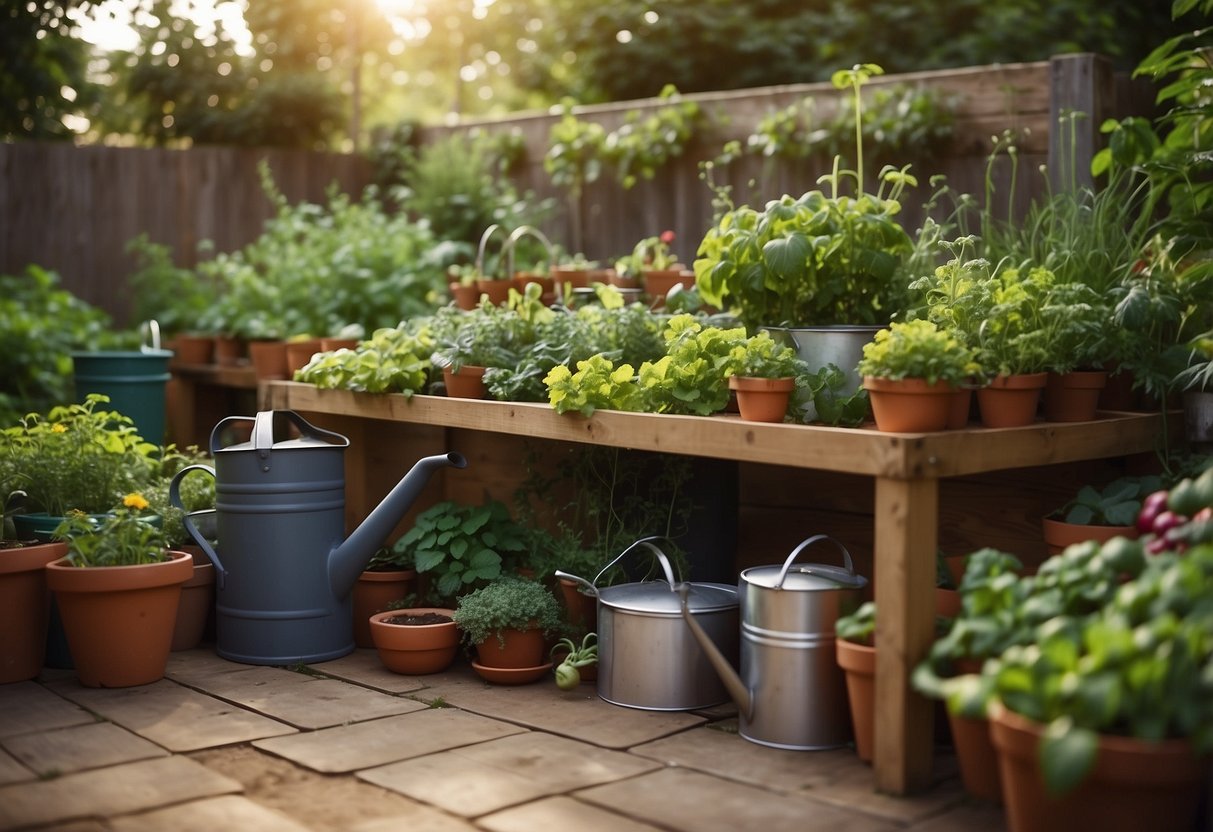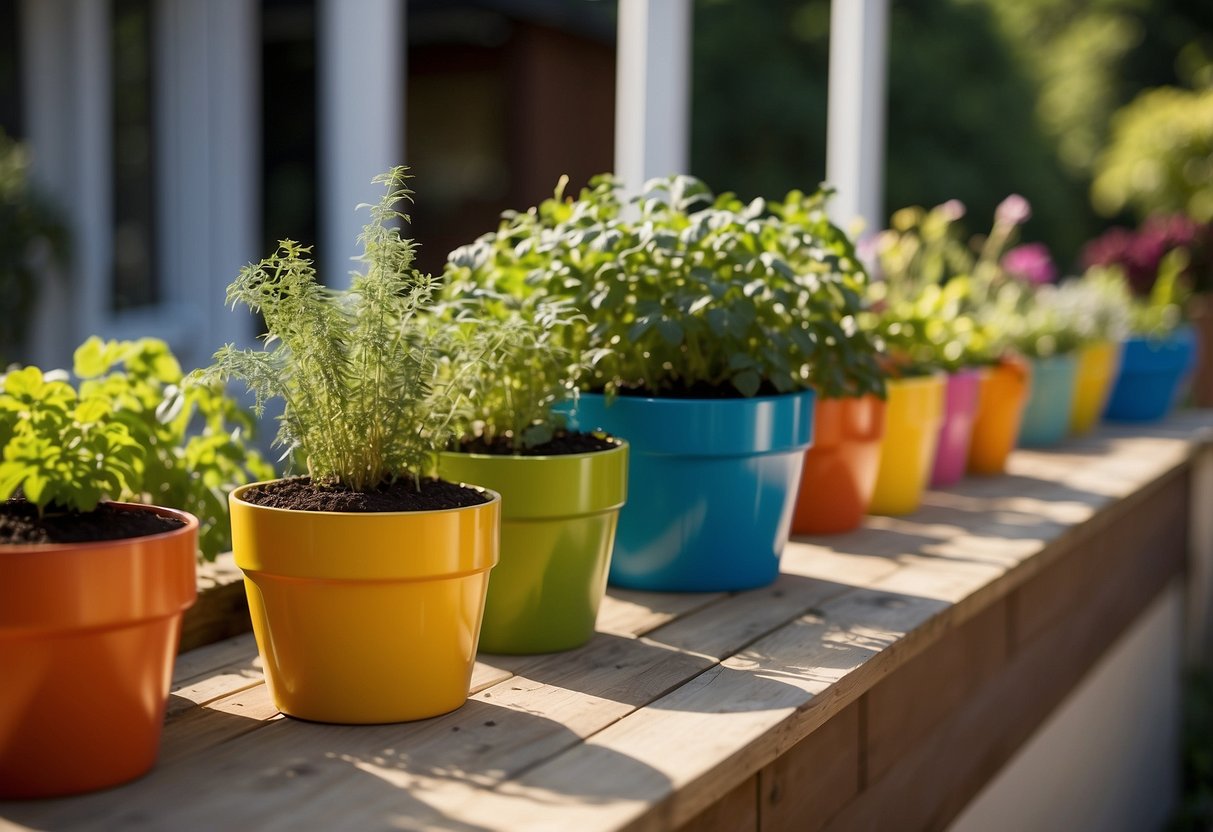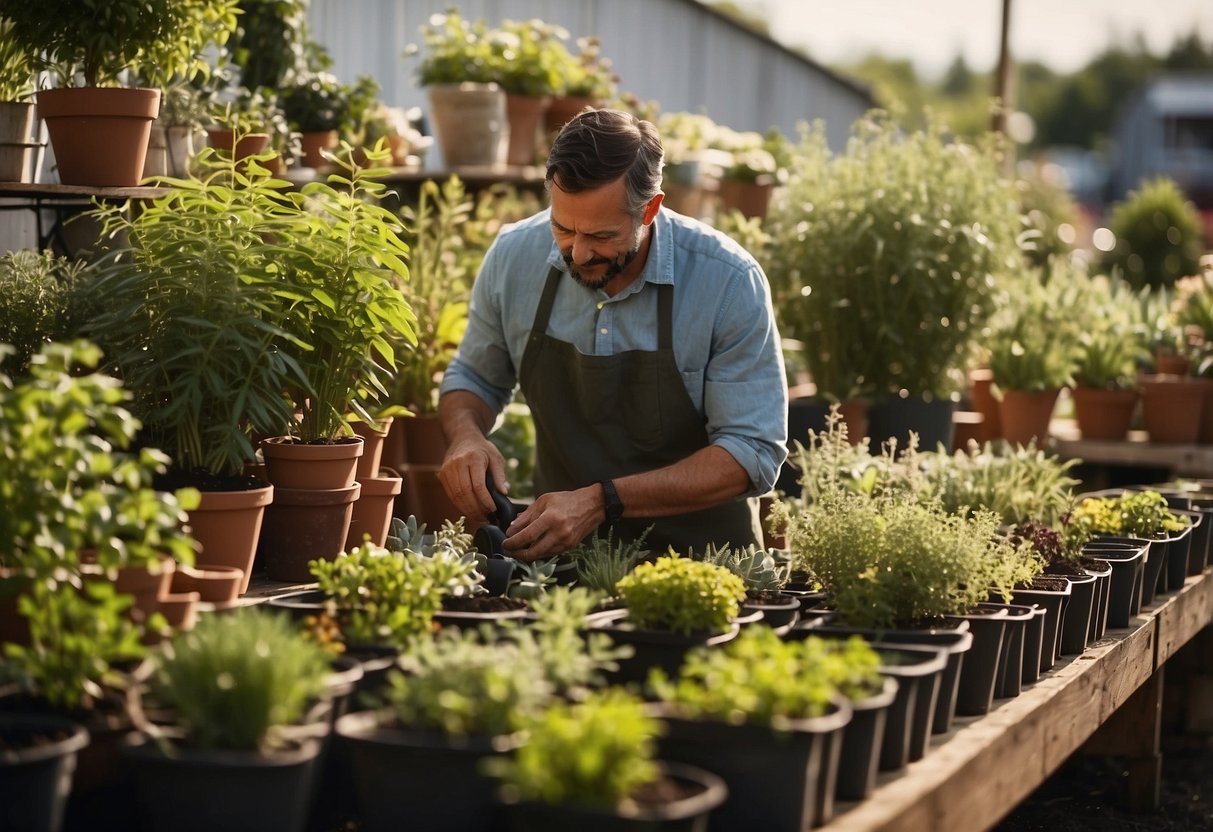Kitchen Garden Ideas: Creative Ways to Grow Your Own Veggies
Creating a kitchen garden is a wonderful way to enjoy fresh produce right from your backyard. Not only does it provide you with delicious, home-grown vegetables, but it also adds beauty and variety to your space. Why have a kitchen garden? Because it offers the perfect combination of functionality and aesthetics.

You can grow a mix of vegetables, fruits, herbs, and flowers that complement each other in many ways. Whether you have a small yard or a larger space, a kitchen garden can be tailored to fit your needs and preferences. Plus, it’s a great way to get outside and enjoy some gardening!
1) Vertical Herb Garden

A vertical herb garden is a great way to grow fresh herbs if you have limited space. You can use a wood slat fence with planters to add greenery to your kitchen wall.
An Ikea bar cart can be turned into a mobile herb garden, letting you move your plants around easily.
2) DIY Raised Beds

DIY raised beds are a great way to grow your own vegetables, herbs, and flowers. You can build them from materials like wood, stone, or even recycled items. They’re perfect for any backyard and can be made to fit any space.
Using untreated wood and corner braces, you can create a simple raised bed from scratch. Fill it with compost-rich soil for healthy plants.
You may need basic tools like a saw and drill, but even beginners can tackle this project. Raised beds improve soil drainage and make gardening easier by reducing the need to bend over.
3) Recycled Container Planters

Reusing old containers for your kitchen garden can be both fun and eco-friendly. Consider using an old teapot as a planter. The handle makes it easy to move, and it adds a whimsical touch to your garden.
Another idea is to repurpose egg cartons for seedlings. They’re the perfect size for young plants, and you can recycle them after use.
You can even transform an old chandelier by using its glass shades as hanging planters. It creates a unique and charming look.
4) Hanging Basket Herb Garden

Creating a hanging basket herb garden is a fun and practical project. You can use baskets to grow a variety of herbs in a small space. This idea is perfect for your kitchen or balcony.
You only need a few materials like baskets, potting soil, and your favorite herbs. You can try herbs like basil, mint, and thyme.
Hang the baskets where they can get enough sunlight. It’s a great way to have fresh herbs at your fingertips. For more ideas, check out these hanging baskets for herbs.
5) Pallet Planter Wall

A pallet planter wall is a fun and creative way to grow more plants in a small space.
Start by finding an old pallet that hasn’t been treated. Treat or paint it yourself to match your garden.
Attach pots or fabric pockets to the slats. You can grow herbs, flowers, or even small vegetables this way.
It’s a great DIY project that adds a rustic touch to your garden. For more ideas, check out these DIY Pallet Garden Ideas.
6) Window Sill Herb Garden

Creating a window sill herb garden is a fun way to add fresh flavors to your cooking. Start by choosing herbs that you use regularly, such as basil, thyme, parsley, and mint.
Fill small pots with potting soil and sprinkle a few seeds on top. Cover the seeds lightly with soil and water well. Place the herbs with the highest sunlight needs, like basil, closest to the window.
Rotate your plants regularly to ensure even growth. You can find more tips and tricks on MyDomaine for growing herbs in your kitchen.
7) Kitchen Counter Microgreens

Growing microgreens on your kitchen counter is both simple and rewarding. These tiny greens pack a punch of flavor and nutrition. You only need a shallow container, some soil, and good-quality seeds.
Make sure your microgreens get enough light. If your kitchen doesn’t get much natural light, consider using grow lights. This ensures healthy, lush growth.
Try growing varieties like radish, mustard, and arugula. They germinate quickly and add a fresh touch to your meals. Plus, it’s fun to see them grow right in your kitchen!
For more ideas, check out Kitchen Counter Microgreens: Fresh Greens at Your Fingertips.
8) Tiered Plant Stand

A tiered plant stand is an excellent way to grow multiple plants in a small space. You can make one using various materials like wood, metal, or even repurposed items like terracotta pots.
If you have an old folding tray table, you can use it as a foldable tray table plant stand.
By stacking pots or trays, you can create a vertical garden that maximizes your growing area. This setup not only saves space but also makes it easier to water and tend to your plants.
9) Straw Bale Garden

A straw bale garden is an easy and fun way to grow vegetables and flowers. First, place the straw bales with the twine on the sides, parallel to the ground.
Water the bales thoroughly and keep them wet for three days. This helps soften the straw.
On day four, sprinkle a high nitrogen fertilizer on top. This starts the composting process within the bale.
During the two-week conditioning period, the bales will heat up and start breaking down.
Once the bales are ready, you can plant your seedlings. Straw bales hold moisture well but still require regular watering, especially in hot weather.
10) Indoor Hydroponic Garden

An indoor hydroponic garden can transform your kitchen into a green oasis. These systems let you grow herbs, veggies, and even fruits without soil.
For a small space, consider the Vertefarm Vertical Hydroponic Indoor Garden. It’s sleek, compact, and fits well in tight spaces.
Basil is a great start. With lots of light and water, it thrives in a hydroponic setup. The AeroGarden is user-friendly, with a control panel to help you monitor your plants.
Planning Your Kitchen Garden

Planning is essential for a successful kitchen garden. You’ll need the right spot, size, and soil to grow healthy plants.
Choosing The Right Location
Pick a sunny spot for your garden. Most vegetables and herbs need about 6-8 hours of direct sunlight each day. Avoid places with too much shade or where water tends to pool. A spot near your kitchen can be convenient for quick harvesting. Ensure your chosen location has good drainage to prevent root rot.
Determining The Size Of Your Garden
Your garden’s size depends on how much space you have and how many plants you want to grow. A small, manageable garden might be 20 feet by 20 feet. For beginners, starting small, such as with a few raised beds or containers, can make gardening less overwhelming. Consider paths between planting areas for easy access.
Soil Preparation Tips
Good soil is crucial. Start by testing your soil’s pH; most vegetables prefer a pH of 6–7. To improve heavy or clay soils, add organic matter like compost or well-rotted manure. Raised beds can help with drainage in poorly draining areas. Mixing in sand can also lighten heavy soil. Remember to rotate crops yearly to keep soil nutrients balanced and avoid pests.
Selecting Plants For Your Kitchen Garden

When choosing plants for your kitchen garden, it’s helpful to pick herbs, vegetables, and companion plants that work well together. This way, your garden will be both beautiful and productive.
Best Herbs To Grow
Basil is a must-have in any kitchen garden. It’s great for salads, pastas, and pesto. Mint grows fast and can be used for drinks and desserts. Rosemary is another strong contender, known for its pine-like flavor, perfect for roast dishes. Oregano pairs well with tomatoes and is excellent for Italian dishes. Parsley is great for garnishing and has a fresh, peppery taste. All these herbs grow well in sunny spots and prefer well-drained soil.
Popular Vegetables To Consider
Tomatoes are a kitchen garden classic. They need lots of sun and should be supported by stakes. Carrots thrive in loose, deep soil and are easy to grow when planted 10-12 weeks before the first frost date. Lettuce varieties such as Buttercrunch and Oak Leaf grow quickly and can be harvested multiple times. Zucchini is another easy vegetable, growing well in sunny spots. Beets are good for cooler climates and need only moderate care to grow well.
Companion Planting Ideas
Marigolds are great at keeping pests away from your vegetables. Basil planted with tomatoes helps improve their growth and flavor. Carrots grow well with onions, as the onions deter carrot flies. Beans planted with corn provide natural support for the bean vines and improve soil fertility. When planting strawberries, consider adding borage, which attracts pollinators and can improve the growth and flavor of strawberries. Use these pairings to create a healthier, more productive garden.







